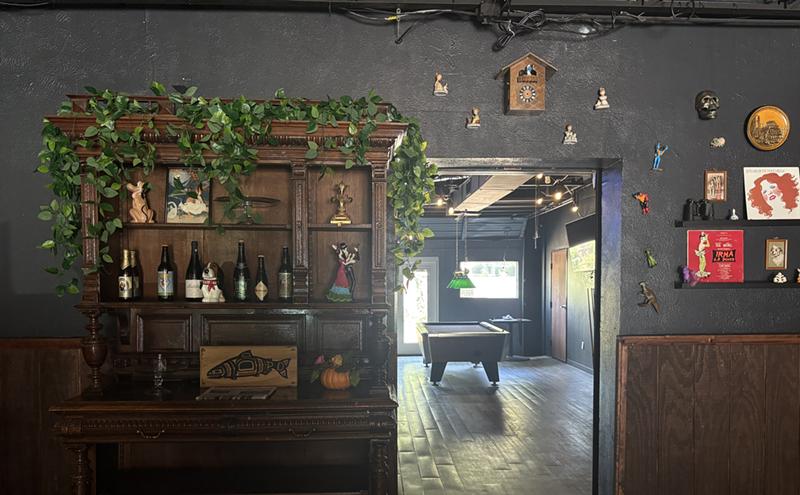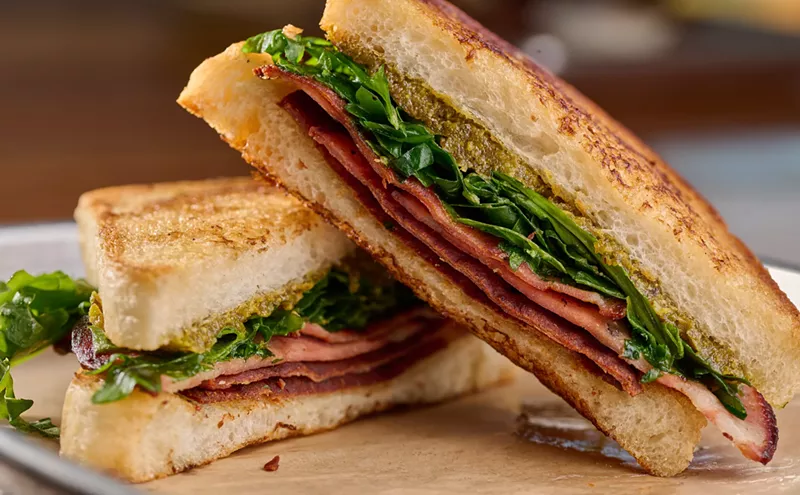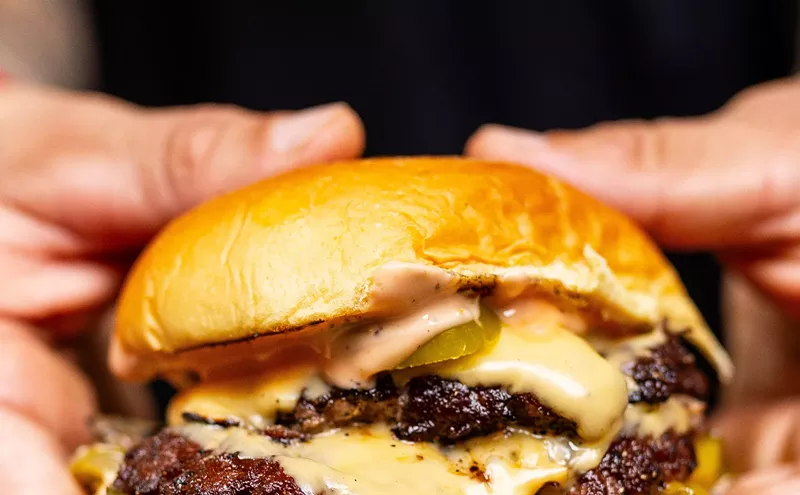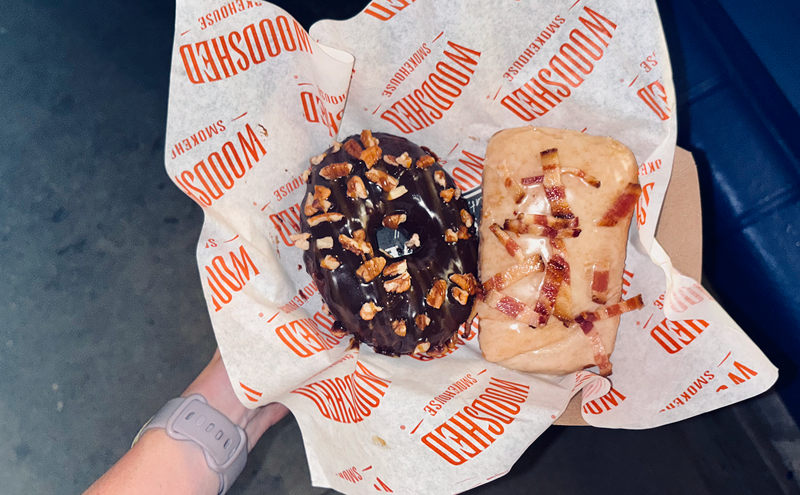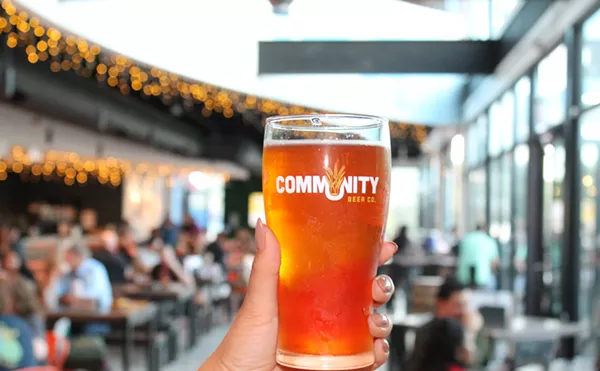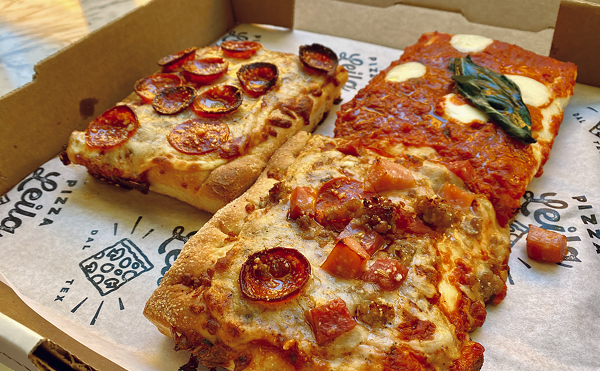Imagine Dallas' most successful chef--an icon firmly embedded in television, cookbookery and Dallas cultural history--mulling such a question. But Stephan Pyles looks worried.
His ceviche is languishing.
It's hard to discern the reasons, except that perhaps culinary adventurism hibernates during the holidays, when Stephan Pyles the restaurant opened, and refuses to bare itself until after the wing flappertizers and the fried clams of March Madness have been devoured. Here is the list of his ceviche dishes:
Salmon with olives and capers
Yellowfin tuna in coconut milk
Chilean sea bass with avocado, tomatillo and serrano
Shrimp in orange
Scallops
Hamachi with guanabana
More than anything, the eponymous restaurant is a well-tailored pouch filled with the spoils from a life (thus far) spent roaming and pillaging the globe. Pyles calls this pouch "New Millennium Southwestern cuisine" or a "global tapestry" woven from threads spun in Texas, Spain, South America, the Middle East and the Mediterranean. Hence, ceviche fitted with Peruvian plunder. We tasted every single example. Had to. How else can you plumb a Pyles worry?
Stephan Pyles is a house of militant flavors: smoky, spicy, salty, sharp. Not so much the ceviches. These are understated things, packed in the recesses of a stemless martini glass with the vertex resting in a vase of crushed ice. It's pure stuff, with minimal distractions, simmered in Peruvian lime for just five minutes before dispensing.
Chilean sea bass with avocado grips with impassioned subtlety. The fish strips are dull green like the putty balls that pass for wasabi in most Japanese restaurants. Flesh is creamy and light, almost fluffy. Hamachi is seasoned with guanabana, a creamy white fruit that has the essence of vanilla. (Broken guanabana leaves and lime juice in water rubbed on a drunk's head are said to soberize.)
The fish is impeccable--delicate as orchid petals, tantalizing as tongue flicks. Well, maybe not the shrimp. Tres ceviche is thus: three glass cones, three tiny forks and separate conical servings of shrimp, salmon and yellowfin. A square ramekin brims with plain popcorn--a palate cleanser. Popcorn? Can this yokel munch really scrub the tongue as well as citrus sorbet or strips of pickled ginger? In the context of lime-simmering, traditional palate cleansers would be rendered impotent. Drab popcorn neutralizes, readying the mouth for the next citrus torrent.
Is Dallas ready for this? It's an odd question, especially considering the sushi swarm that has engulfed North Texas over the last few years. Now, many think nothing of bringing raw pieces of rosy tuna or a milky strip flounder to their pursed lips. Surely raw fish lightly roiled in citrus won't repel.
Pyles sees it otherwise. "It took Dallas a long time to get there," he says of the near-ubiquitous sushi acceptance. Plus, ceviche has been corrupted over the years; poached fish and shrimp wreathed in tomato, cilantro and wedges of avocado slowly liquefying in juice that sings of its reconstitution. Or it's a lazy repository for fish slipping past its prime, reanimated (it is hoped) in the lively lime. Yet Pyles, armed with his poached ceviche secrets, may reset the standard.
In one sense, Stephan Pyles the restaurant crowns the incessant pillaging of Pyles the man, who has spent large chunks of his life foraging through Latin America, Europe and other global parts for culinary clues. Sure, the menu includes holdovers from Star Canyon--bone-in cowboy ribeye, tamale tart with garlic custard and crab, heaven and hell cake--to keep the groupies from becoming disoriented. But more often than not, the trudging results in drop-dead simplicity, such as a delicious fava bean and artichoke salad leavened with duck bacon. Or the little complimentary lobster chunks filling porcelain spoons wreathed in corn foam or maybe the froth of beets. Pyles says when he first encountered foams in his travels, he thought them gimmicky. But now he's addicted to the light textural footprints they transmit.
There's complexity too. Buttery sautéed sea bass drizzled in spicy garlic mayo soaks in a bumpy fish fumet riddled with fava beans, tomatoes and arugula. Garlic croutons are slipped in there, too, mysteriously clinging to some semblance of crisp even as they wick the bath.
Barbecued short rib is inspired by Peruvian Creole cookery. The presentation is stunning. A corn husk is tied at one end and opened, with the split sides forming a wide slash. Tucked near the knot is a goat's cheese and smoked tomato tamale, moist and smooth. The short rib, slowly browned and braised in chipotle barbecue sauce, rests where the husk is most parted. A bone rises from the moist, savory meat like a lamppost.
The Pyles culinary amalgam is deeply anchored. Stephan Pyles has a tapas menu. It has a tapas bar, topped in granite, fixed in thick steel and staggered in sharply angled seating nooks over its length. Glass dishes on pedestals hold its bounties: olives, beans, almonds, manchego cheese.
The tapas bar hunkers in front of the kitchen, a glass coop rich in the language of right angles and clean lines. Chefs move with methodical deliberateness as flames--from bread kiln, rotisserie, wood-fired grill and blowtorch--flick and spear. Spoons peek from arm pockets sewn into chef's jackets. They're drawn as pans are lifted from burners, plunged into broths and sauces as they succumb to scrutiny. The spoons are then lathered, wiped and rinsed before they're returned to their slips.
Lift and peer beyond the underbrush of olives, beans and nuts, and Stephan Pyles becomes a West Texas desert reflection flooded with dry browns, barren rock and a faux tumbleweed chandelier woven from crepe myrtle twigs. A concrete slab finished in Venetian plaster dams the lounge din from the dining lull. The slab punches through the outside wall, seeping out onto the patio overlooking a water garden.
Dishes seem to absorb cues from the restaurant's random geometry. Lentils with chorizo (Spanish sausage) and clams arrive in a small terrine resting in a fitted square glass charger. The dish breathes subtle complexity: earthiness, rich spark, suppleness and hints of marine sweetness. Because they are chopped or otherwise pulverized, the chorizo and clams cast only shadows over the spread of lentils. One glaring flaw: no spoon rests on the charger. Forks don't dance well with lentils. The unctuous ooze, where most of the richness seeps, slips through the tines. And all efforts to plumb it reek of gaucheness.
Perhaps geometry is most potently absorbed in the micro arugula salad. It arrives on a narrow serving strip. Splashed with citrus vinaigrette, the arugula rises from one end of the plate like a hair knot. In the center a triangular Tunisian phyllo turnover stuffed with potatoes and parsley is fitted with a quail egg fried into the same shape. At the opposite end of the plate is a grid composed of tiny bars carved from red and yellow beets.
Pyles upends perceptions in other ways. Tacu tacu is a peasant dish of seasoned beans and rice from colonial Peru. Pyles uses it as bedrock for foie gras, of all things. A two-ounce lobe, seared and deglazed with Spanish sherry and poultry stock, is positioned on a spread of rice and stewed lentils pocked with bits of smoked bacon. The liver is firm with a chewy veneer instead of delicately creamy with a slightly tense surface. Maybe this foie gras is too firm, overshooting the luxurious creaminess. Admittedly this is a difficult texture to achieve, if in fact this is Pyles' desire. Yet what sets this rendition apart from most other examples is that, aside from the fried banana slices x'd across the top, it has dispensed with fruits. Perhaps foie gras should simply glance at sweet and fruity and veer harder into the savory to draw the nutty richness, as the lentil-rice surely does.
Pyles is so loaded, it's hard to dissect. Even focused visits seem to scuff just one of its many and varied surfaces. It's stockpiled with sultry innovations rendered from simple discoveries that never come across as pretentious or forced. It's a twisted vision that blends the traditional with the contemporary, the natural with the contrived, the food with the architecture into one logical, compelling alloy. Is Dallas ready for this? No. But it will be. Just watch. 1807 Ross Ave., 214-580-7000. Open 6 p.m.- 11 p.m. Monday-Saturday. $$$-$$$$



